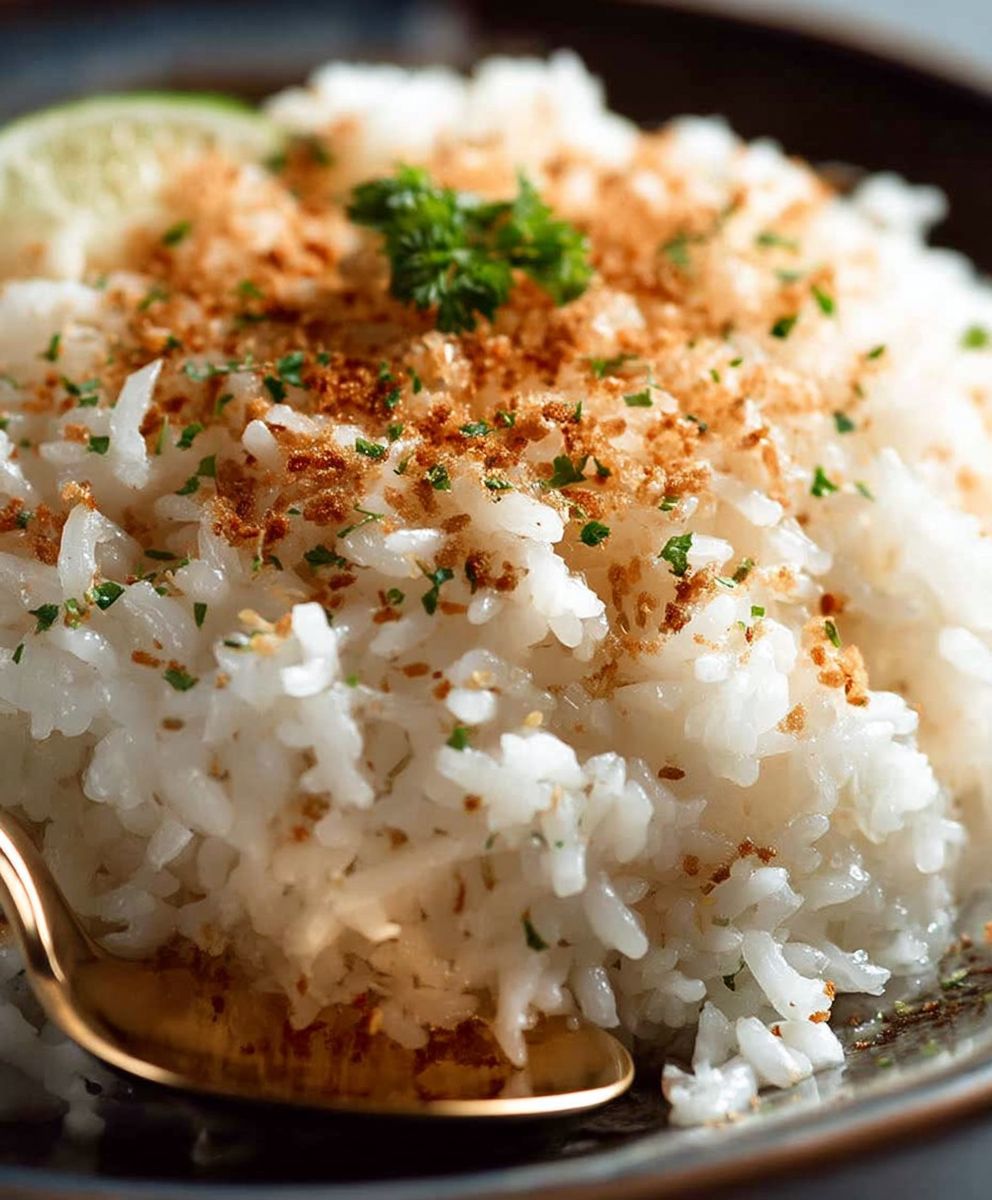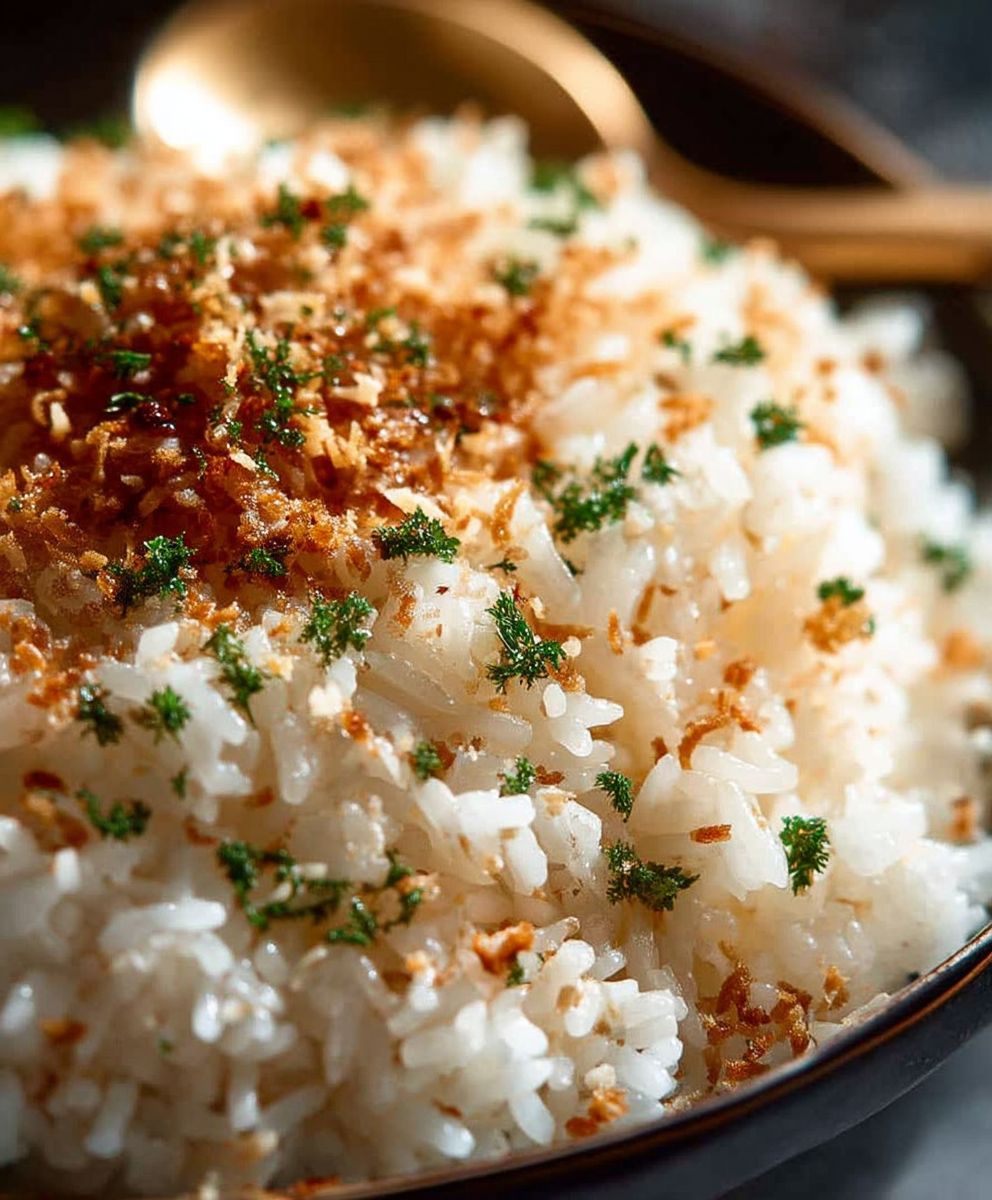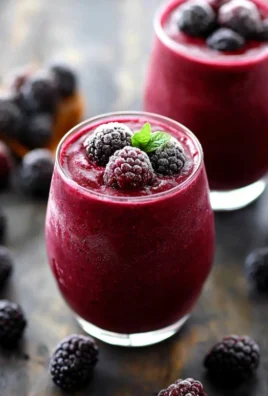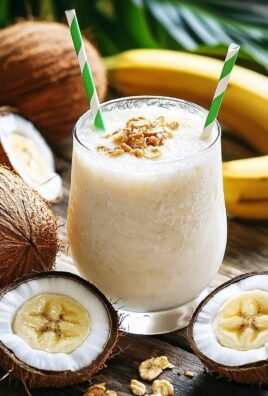Coconut Rice: Just the name conjures images of tropical breezes and sun-drenched beaches, doesn’t it? But this isn’t just a vacation daydream; it’s a culinary reality that’s surprisingly easy to bring into your own kitchen. Forget boring, bland rice we’re about to embark on a flavor journey that will transform your weeknight dinners and impress your dinner guests alike.
Across Southeast Asia, the Caribbean, and even parts of South America, variations of coconut rice have been cherished for centuries. It’s more than just a side dish; it’s a staple, a comfort food, and a symbol of hospitality. In many cultures, it’s traditionally served during celebrations and special occasions, representing abundance and good fortune. The creamy, subtly sweet flavor perfectly complements spicy curries, grilled seafood, and vibrant vegetable dishes.
What’s not to love? The allure of coconut rice lies in its simplicity and versatility. It’s incredibly easy to make, requiring just a handful of ingredients and minimal effort. The result is a fluffy, fragrant rice that’s both comforting and exotic. The delicate sweetness of the coconut milk adds a touch of richness that elevates any meal. Plus, it’s naturally gluten-free and can easily be made vegan, making it a crowd-pleasing option for diverse dietary needs. So, are you ready to discover the magic of coconut rice? Let’s get cooking!
Ingredients:
- 2 cups long-grain rice, rinsed thoroughly
- 1 (13.5 ounce) can full-fat coconut milk
- 1 cup water
- 1/2 teaspoon salt, or to taste
- 1 tablespoon granulated sugar (optional, but recommended)
- 1 pandan leaf, knotted (optional, but adds a lovely aroma)
- 1 tablespoon unsalted butter or coconut oil (optional, for extra richness)
- Toasted coconut flakes, for garnish (optional)
- Fresh cilantro or parsley, chopped, for garnish (optional)
Preparing the Coconut Rice:
- Rinse the Rice: This is a crucial step! Place the rice in a fine-mesh sieve and rinse it under cold running water until the water runs clear. This removes excess starch, which prevents the rice from becoming sticky and gummy. I usually rinse it for about 2-3 minutes.
- Combine Ingredients in a Pot: In a medium-sized saucepan with a tight-fitting lid, combine the rinsed rice, coconut milk, water, salt, and sugar (if using). Stir well to ensure the salt and sugar are dissolved.
- Add Aromatics (Optional): If you’re using a pandan leaf, add the knotted leaf to the pot. The pandan leaf will infuse the rice with a subtle, fragrant aroma. You can also add a tablespoon of butter or coconut oil at this stage for extra richness and flavor.
- Bring to a Boil: Place the saucepan over medium-high heat and bring the mixture to a rolling boil. Watch it carefully, as it can boil over quickly, especially with the coconut milk.
- Reduce Heat and Simmer: Once the mixture is boiling, immediately reduce the heat to the lowest setting possible. The rice should be barely simmering. Cover the pot tightly with the lid. It’s important to maintain a tight seal to trap the steam, which is essential for cooking the rice properly.
- Cook Undisturbed: Let the rice simmer undisturbed for 18-20 minutes, or until all the liquid has been absorbed and the rice is tender. Do not lift the lid during this time! Peeking will release the steam and can result in unevenly cooked rice.
- Check for Doneness: After 18-20 minutes, carefully check the rice. If all the liquid has been absorbed and the rice is tender, proceed to the next step. If there is still some liquid remaining, cover the pot again and continue to simmer for another 2-3 minutes, checking periodically. If the rice seems dry but is not fully cooked, add a tablespoon or two of water and continue simmering.
- Remove from Heat and Let Rest: Once the rice is cooked, remove the pot from the heat and let it sit, covered, for 10 minutes. This resting period allows the steam to redistribute evenly throughout the rice, resulting in a fluffier texture.
- Fluff with a Fork: After the resting period, remove the lid and fluff the rice gently with a fork. This separates the grains and prevents them from clumping together. If you used a pandan leaf, remove it at this point.
- Taste and Adjust Seasoning: Taste the rice and adjust the seasoning if necessary. You may want to add a pinch more salt or a touch more sugar, depending on your preference.
- Serve and Garnish: Serve the coconut rice hot. Garnish with toasted coconut flakes and chopped fresh cilantro or parsley, if desired. The toasted coconut adds a nice textural contrast and a nutty flavor, while the cilantro or parsley provides a fresh, herbaceous note.
Tips and Variations:
- Type of Rice: While long-grain rice is generally recommended for coconut rice, you can also use medium-grain rice. However, be aware that medium-grain rice tends to be stickier than long-grain rice, so you may need to adjust the amount of liquid accordingly. Avoid using short-grain rice, as it will likely result in a very sticky and mushy dish.
- Coconut Milk: Full-fat coconut milk is essential for achieving the best flavor and texture. Light coconut milk will result in a less rich and flavorful dish. If you’re concerned about the fat content, you can use a combination of full-fat and light coconut milk, but I recommend using at least half full-fat.
- Sweetness: The amount of sugar you add is entirely up to your personal preference. Some people prefer their coconut rice to be slightly sweet, while others prefer it to be more savory. Start with 1 tablespoon of sugar and adjust to taste. You can also use other sweeteners, such as honey or maple syrup, but be aware that they will impart a slightly different flavor.
- Aromatics: In addition to pandan leaf, you can also add other aromatics to your coconut rice, such as ginger, lemongrass, or garlic. Simply add a few slices of ginger, a stalk of lemongrass, or a clove of garlic to the pot along with the other ingredients. Remove the aromatics before serving.
- Toasting the Rice: For a nuttier flavor, you can toast the rice before cooking it. Simply heat a dry skillet over medium heat and add the rinsed rice. Cook, stirring constantly, until the rice is lightly toasted and fragrant, about 5-7 minutes. Be careful not to burn the rice.
- Using a Rice Cooker: You can also make coconut rice in a rice cooker. Simply combine all the ingredients in the rice cooker and cook according to the manufacturer’s instructions.
- Serving Suggestions: Coconut rice is a versatile dish that can be served with a variety of cuisines. It pairs well with curries, stir-fries, grilled meats, and seafood. It’s also a great side dish for vegetarian meals.
- Storage: Leftover coconut rice can be stored in an airtight container in the refrigerator for up to 3 days. To reheat, simply microwave or steam until heated through. You may need to add a tablespoon or two of water to prevent the rice from drying out.
Troubleshooting:
- Rice is Too Sticky: If your coconut rice is too sticky, it’s likely because you didn’t rinse the rice thoroughly enough. Next time, be sure to rinse the rice until the water runs clear. You can also try using less water.
- Rice is Too Dry: If your coconut rice is too dry, it’s likely because you used too much water or cooked it for too long. Next time, try using less water and checking the rice more frequently. You can also add a tablespoon or two of water during the cooking process if the rice seems dry.
- Rice is Not Cooked Through: If your coconut rice is not cooked through, it’s likely because you didn’t use enough water or didn’t cook it for long enough. Next time, try using more water and cooking the rice for a longer period of time. Make sure your pot has a tight-fitting lid to trap the steam.
- Coconut Milk Curdled: Sometimes, the coconut milk can curdle during cooking. This is usually due to the heat being too high. Make sure to reduce the heat to the lowest setting possible once the mixture comes to a boil.
Nutritional Information (Approximate):
Please note that the nutritional information is an estimate and may vary depending on the specific ingredients used.
- Serving Size: 1 cup
- Calories: Approximately 250-300
- Fat: 15-20g
- Saturated Fat: 12-15g
- Cholesterol: 0mg
- Sodium: 200-300mg
- Carbohydrates: 30-40g
- Fiber: 1-2g
- Sugar: 2-5g (depending on added sugar)
- Protein: 3-4g
Enjoy your delicious homemade coconut rice! I hope these tips and tricks help you create the perfect batch every time.

Conclusion:
This Coconut Rice recipe is more than just a side dish; it’s a flavor adventure waiting to happen in your kitchen! I truly believe you’ll find it’s a game-changer, transforming ordinary meals into something truly special. The subtle sweetness of the coconut milk, combined with the perfectly cooked rice, creates a texture and taste that’s simply irresistible. It’s incredibly versatile, easy to make, and guaranteed to impress your family and friends.
Why is this a must-try? Because it elevates any meal! Forget bland, boring rice. This recipe adds a touch of tropical magic to everything it accompanies. It’s the perfect complement to spicy curries, grilled seafood, or even roasted chicken. The creamy, slightly sweet flavor profile balances out savory dishes beautifully, creating a harmonious and satisfying dining experience. Plus, it’s surprisingly simple to make, requiring minimal effort and readily available ingredients. You don’t need to be a culinary expert to achieve restaurant-quality results with this recipe.
But the best part? The possibilities are endless! While I love serving it alongside a vibrant Thai green curry, don’t be afraid to experiment. For a vegetarian option, try pairing it with a lentil stew or a vegetable stir-fry. If you’re a fan of seafood, grilled shrimp or pan-seared salmon are fantastic choices. And for a truly decadent treat, consider adding a sprinkle of toasted coconut flakes and a drizzle of honey before serving.
Here are a few serving suggestions and variations to get you started:
* Spicy Kick: Add a pinch of red pepper flakes or a finely chopped chili pepper to the rice while it’s cooking for a touch of heat.
* Herby Freshness: Stir in some chopped cilantro or parsley just before serving for a burst of fresh flavor.
* Fruity Twist: Add some diced mango or pineapple to the rice for a tropical-inspired side dish.
* Savory Delight: Sauté some garlic and ginger in coconut oil before adding the rice and coconut milk for a more savory flavor profile.
* Creamy Dream: Use full-fat coconut milk for an extra rich and creamy texture.
I’m confident that once you try this Coconut Rice recipe, it will become a staple in your kitchen. It’s a simple yet elegant dish that’s perfect for weeknight dinners or special occasions. It’s a crowd-pleaser, a flavor enhancer, and a guaranteed way to impress your guests.
So, what are you waiting for? Gather your ingredients, follow the simple steps, and prepare to be amazed. I encourage you to try this recipe and experience the magic of perfectly cooked, flavorful coconut rice for yourself.
And most importantly, I’d love to hear about your experience! Did you try any of the variations? What did you serve it with? Share your photos and comments below. Let me know what you think and how you made it your own. Happy cooking! I can’t wait to see what culinary creations you come up with! Don’t forget to rate the recipe if you enjoyed it! Your feedback helps me create even more delicious and easy-to-follow recipes for you to enjoy.
Coconut Rice: The Ultimate Guide to Perfect, Fluffy Results
Fragrant, fluffy coconut rice, ideal as a side for curries, stir-fries, or grilled dishes. Made with coconut milk, long-grain rice, and a hint of sweetness.
Ingredients
- 2 cups long-grain rice, rinsed thoroughly
- 1 (13.5 ounce) can full-fat coconut milk
- 1 cup water
- 1/2 teaspoon salt, or to taste
- 1 tablespoon granulated sugar (optional, but recommended)
- 1 pandan leaf, knotted (optional, adds aroma)
- 1 tablespoon unsalted butter or coconut oil (optional, for richness)
- Toasted coconut flakes, for garnish (optional)
- Fresh cilantro or parsley, chopped, for garnish (optional)
Instructions
- Rinse the Rice: Place the rice in a fine-mesh sieve and rinse under cold running water until the water runs clear (2-3 minutes).
- Combine Ingredients: In a medium saucepan with a tight-fitting lid, combine the rinsed rice, coconut milk, water, salt, and sugar (if using). Stir well.
- Add Aromatics (Optional): Add the knotted pandan leaf and butter or coconut oil (if using).
- Bring to a Boil: Bring the mixture to a rolling boil over medium-high heat, watching carefully.
- Reduce Heat and Simmer: Immediately reduce the heat to the lowest setting, cover tightly, and simmer undisturbed for 18-20 minutes, or until all liquid is absorbed and rice is tender. Do not lift the lid!
- Check for Doneness: After 18-20 minutes, check the rice. If liquid remains, cover and simmer for another 2-3 minutes, checking periodically. If the rice seems dry but is not fully cooked, add a tablespoon or two of water and continue simmering.
- Remove from Heat and Let Rest: Remove from heat and let sit, covered, for 10 minutes.
- Fluff with a Fork: Remove the lid and fluff gently with a fork. Remove the pandan leaf (if used).
- Taste and Adjust Seasoning: Taste and adjust seasoning if necessary.
- Serve and Garnish: Serve hot. Garnish with toasted coconut flakes and chopped cilantro or parsley (if desired).
Notes
- Rice Type: Long-grain is recommended. Medium-grain can be used, but may be stickier. Avoid short-grain.
- Coconut Milk: Full-fat is best for flavor and texture.
- Sweetness: Adjust sugar to your preference.
- Aromatics: Ginger, lemongrass, or garlic can be added. Remove before serving.
- Toasting Rice: Toasting the rice before cooking adds a nuttier flavor.
- Rice Cooker: Can be made in a rice cooker.
- Serving Suggestions: Pairs well with curries, stir-fries, grilled meats, and seafood.
- Storage: Store leftovers in an airtight container in the refrigerator for up to 3 days. Reheat in the microwave or steam, adding a little water if needed.
- Troubleshooting:
- Sticky Rice: Rinse rice more thoroughly next time.
- Dry Rice: Use less water next time.
- Undercooked Rice: Use more water and cook longer.
- Curdled Coconut Milk: Reduce heat.





Leave a Comment